tengku
The tengku are a flightless race of humanoid birds with an unknown origin. Tengku are known for their cleverness and all too often for their avarice.
Many humans and others speculate that their ancestors used to be able to fly, but one or all of the Nine stripped them of their wings as punishment for their avarice. Tengku generally hate this story and vigorously deny its authenticity.
That said, tengku are often seen quietly gazing upon birds in flight with wistful jealousy.
Basic Information
Anatomy
Tengku are evolved from avians but they cannot fly.
Tengku average about 4’2” with a standard deviation of 3 inches. Males and females are not only the same size as each other on average, but they are also difficult for non-tengku to tell tengku males and females apart. Other than having corvid (crow/raven) like heads and being covered in black feathers, their anatomy is very close to human.
Tengku feathers are often all black, though a few have small white highlights, especially those of Fiery ethnicity. Feathers tend to lighten with age during a tengku's twilight years, eventually turning grey on the edges.
Compared to humans and demihumans, tengku bones are slightly hollow. This makes tengku a bit more nimble and agile relative to humans, but it also makes them somewhat more susceptible to suffering broken bones.
Biological Traits
Like most other mortals, elemental ethnicity has some impact on body shape. Earthy tengku tend be stocky, airy tengku tend to be lanky, watery tengku tend to be curvy, and fiery tengku tend to fall between the extremes. Mixed element tengku are common.
Tengku are not known for their brute strength as they tend to prefer to rely on their knowledge and wits, but a tengku that exercises regularly can stand toe-to-toe with human and demi-human warriors.
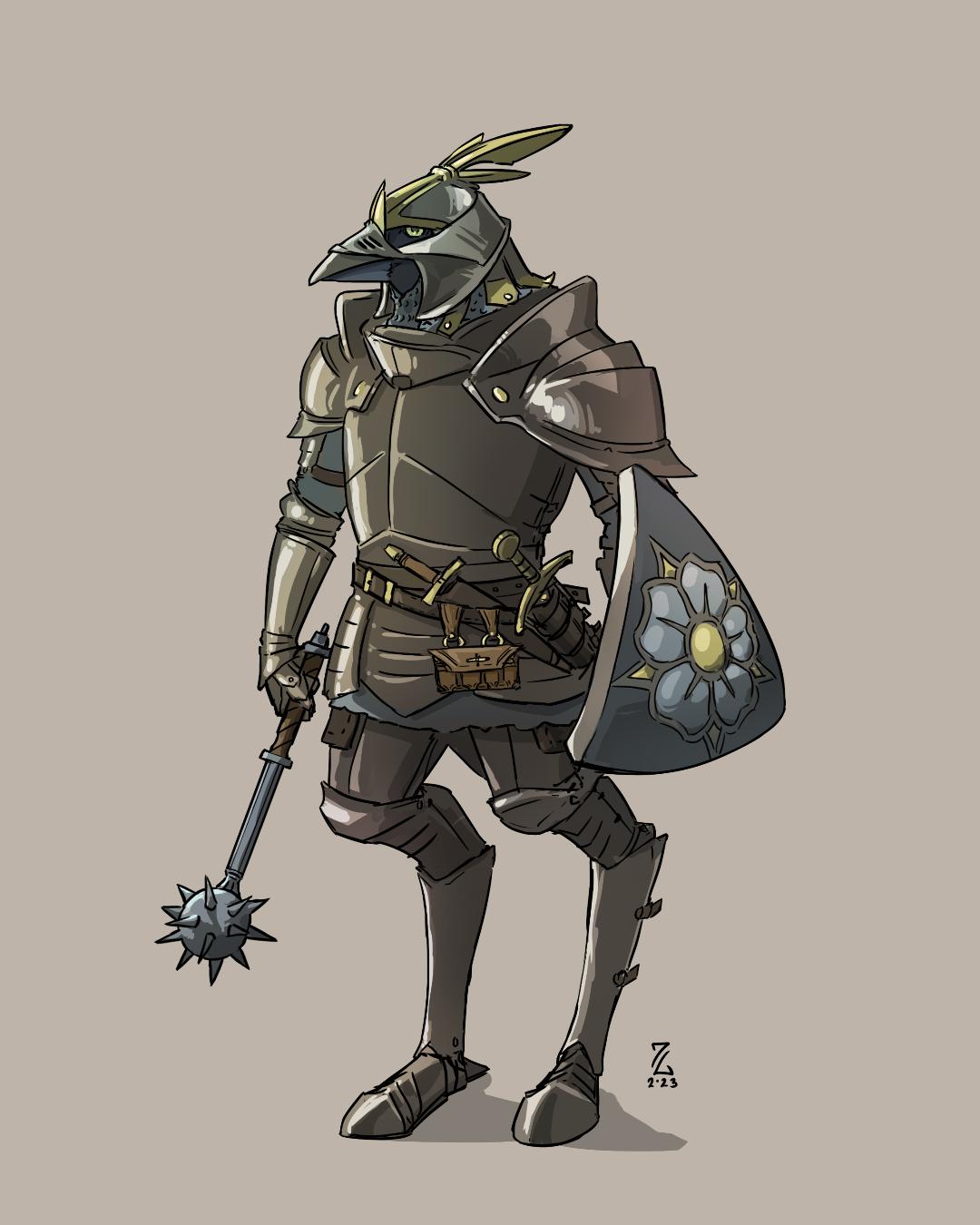
Armored Tengku with potion pouch by Zeta Gardner
Genetics and Reproduction
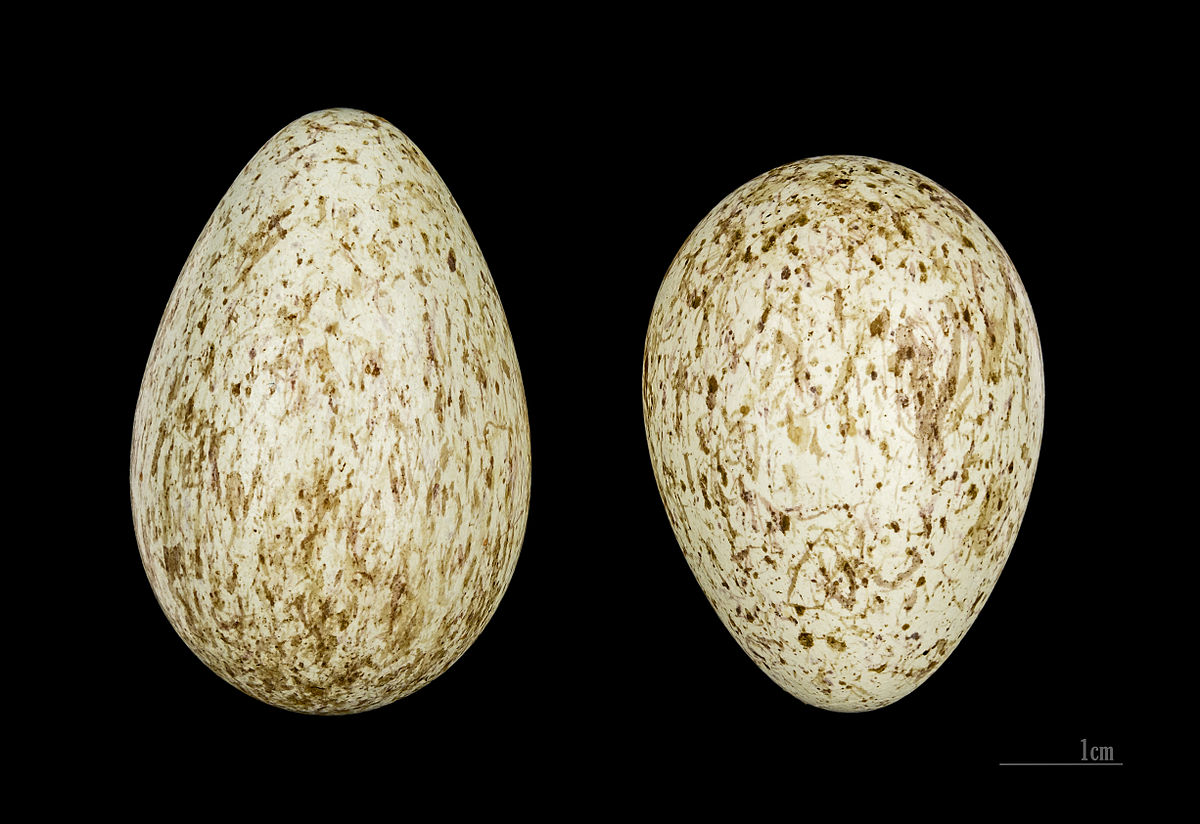
Egg of Common Raven. Collection of Henri Heim de Balsac/Jacques Perrin de Brichambaut. by Didier Descouens (photographer)
Tengku reproduce like corvid birds, sexually reproducing fertilizing eggs internally via the cloaca. A process tengku are very private about.
Tengku females usually lay a single egg at a time, with twin births being even rarer among tengku than humans.
Growth Rate & Stages
Tengku mature faster than most Scarterran mortals.
Tengku are considered to have reached the age of majority at age nine. They usually view fourteen to twenty-five to be the ideal ages for parents to raise chicks but females remain fertile through about thirty-five and males through their early forties.
On the plus side, tengku are usually pretty spry not suffering as many unwanted body changes as middle aged humans and dwarves until their last decade. Most tengku die in their old age in the early to mid fifties with a few lucky individuals making it to sixty-five.
Ecology and Habitats
Tengku are intelligent, tenacious and adaptable and they can survive almost anywhere. That said, they generally find comfort in crowds and are disproportionately represented in urbanized areas, especially cosmopolitan areas with a lot of mercantile traffic such as cross-roads towns and ports.

Misty Market Place in the evening by Me with Nightcafe
Additional Information
Uses, Products & Exploitation
Unfertilized tengku eggs can be distilled into a small amount of reagents. Some tengku find the process offensive or even ammoral and others do not think anything of it.
Fertilized tengku eggs provide much more potent reagents but this is something almost all tengku are opposed to, viewing the practice similar to how humans would view potions made of dead babies.
There is a black market trade in tengku eggs.
Facial characteristics
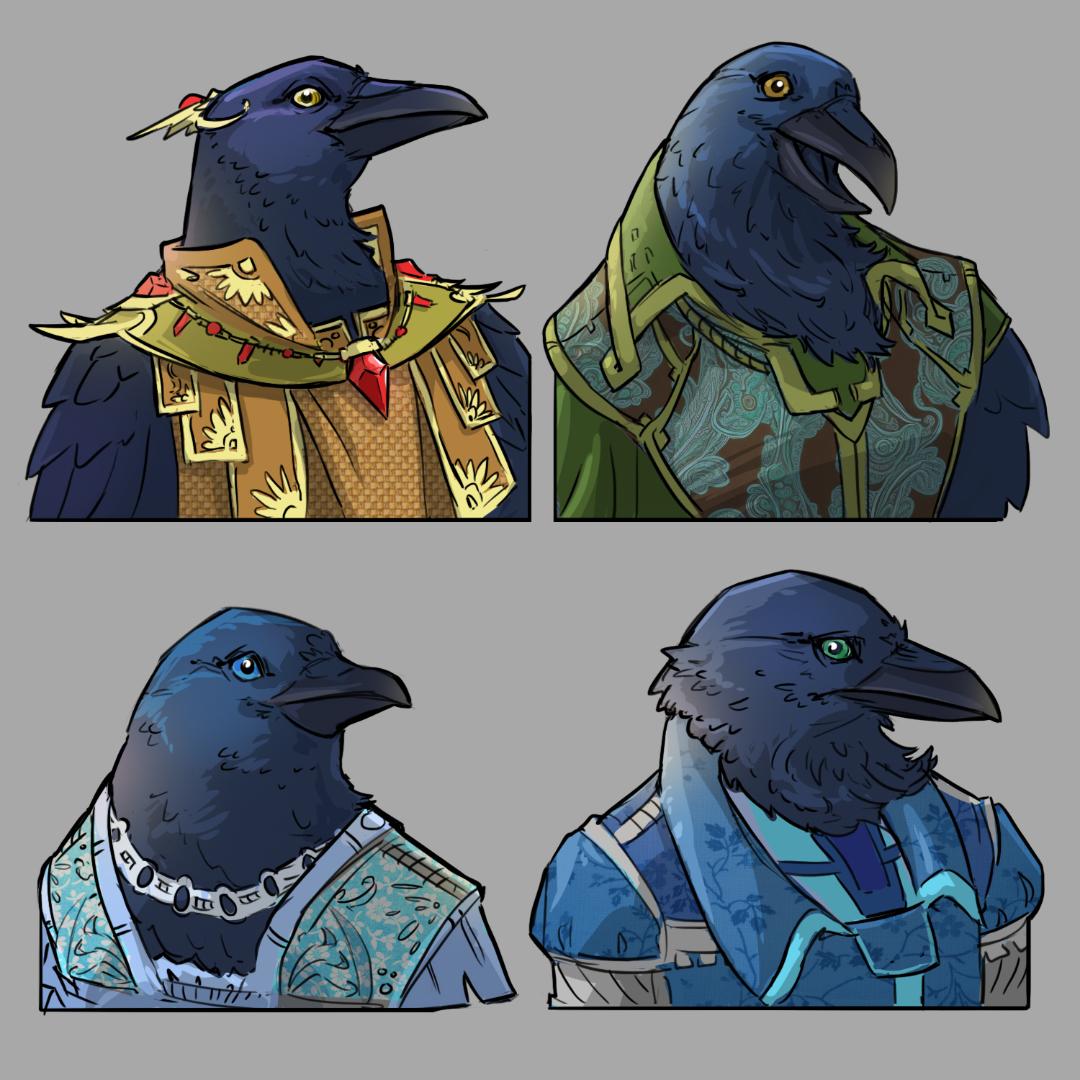
Square of Tengku Headshots by Zeta Gardener
Geographic Origin and Distribution
Tengku can be found on nearly every inhabited landmass in Scarterra.
There are no all-tengku to speak of as most tengku live as a small minority within the nations of others. Typically tengku make up about 2% of the population of human and elven lands and 1% of dwarven lands.
Tengku are attracted to large population centers more than rural areas, and the bird folk often make up as much as 10% of the population of Scarterra's largest towns and cities.
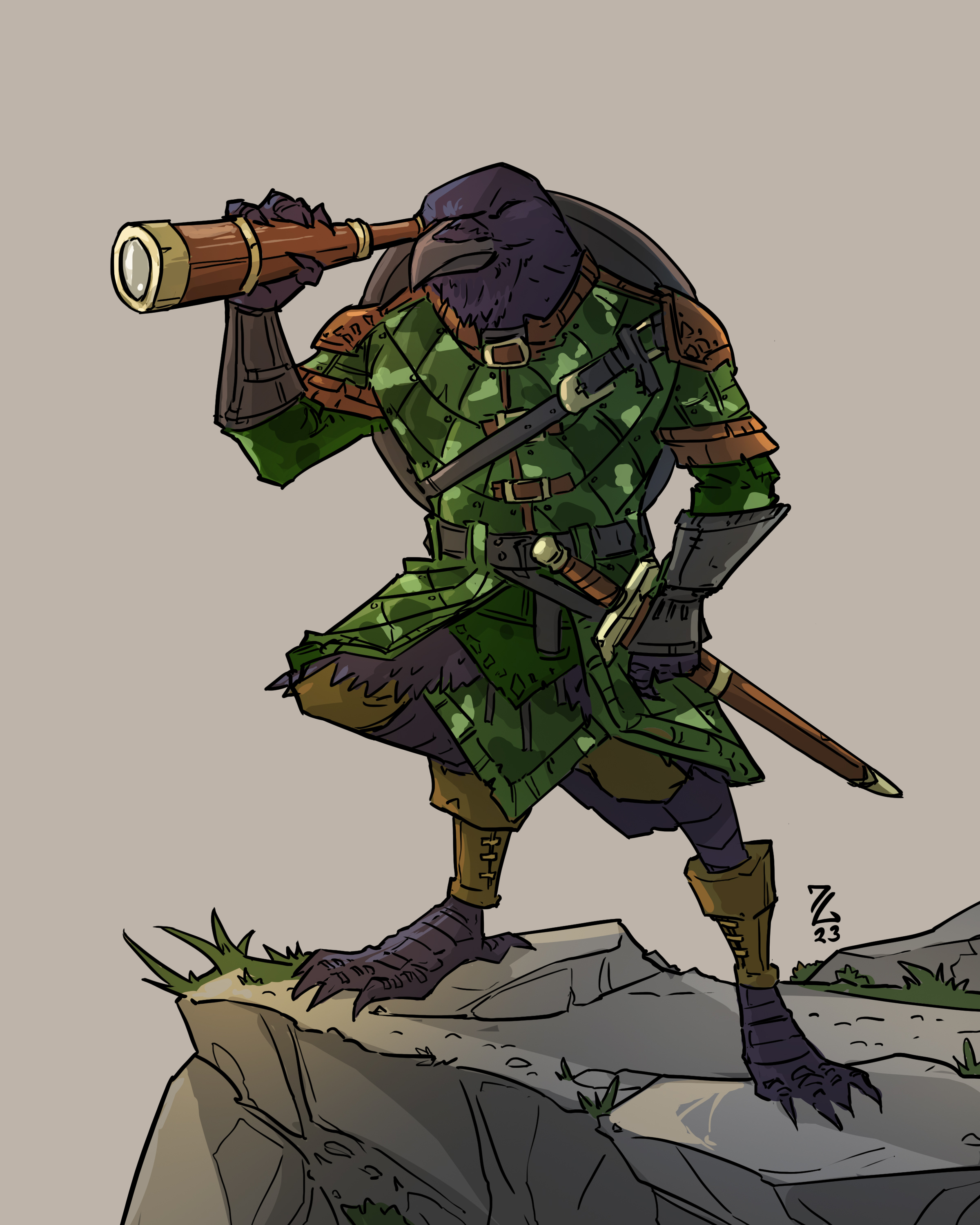
While many tengku are well traveled, there are few if any tengku in the Feudal Era that would qualify as true nomads. Tengku are generally more comfortable in the civilized world than the wilderness and generally only go into the deep wilderness if they believe they can profit from it though a few exceptional individuals develop of a love of travel and exploration for the novelty and not just the profit.

Tengku #7 camo version by Zeta Gardner
Average Intelligence
On the surface, tengku have the same intelligence and reasoning power relative to humans and demihumans, but tengku claim to be intelligent, and they have a point.
Tengku children grow physically fast, but they also grow mentally fast able to learn new skills, especially language skills at a speed that would astonish human parents
The period of mental growth eventually slows down but adult tengku generally have superior mental recall relative to adult humans and they can learn new knowledge and skills considerably faster which makes up for their relatively shorter life span.
Perception and Sensory Capabilities
Tengku have similar sense of hearing and smell relative to humans but they have superior vision. Their vision is even slightly better than elven vision.
Civilization and Culture
Gender Ideals
Tengku are generally egalitarian if not androgynous with males and females able to hold almost any role or professions. Fathers and mothers largely perform the same tasks in parenting chicks.
That said, tengku will mimic the gender norms of humans and demi-humans if they feel it is advantageous to do so in order to blend in.
Relationship Ideals
Tengku sometimes mate for life, sometimes don’t, but mated pairs face social pressure from other tengku at least stay together until their young are all grown up which only takes nine years for tengku chicks.
Tengku push their young out of the nest so to speak very quickly after a child’s ninth hatching day. They are not allowed to return until they made their fortune though they only have to show an ability to stand on their two feet, they don't have to show fabulous wealth in order to be welcomed back.
Many choose not to return, eventually settling somewhere else. In this way, tengku have spread to every corner of Scarterra.
Average Technological Level
Tengku are more or less fully integrated with human, elven, and to a lesser extant dwarven society. There are relatively few tengku artisans and craftsmen so the bird folk tend to buy or barter advanced crafted items.
Tengku have a very high literacy rate. They are arguably more literate than any other mortal race in Scarterra. Not too surprisingly, one handicraft that the tengku are likely to be seen practicing is book binding.
Major Language Groups and Dialects
Ironically, the tengku's innate language skills are so good, their own their own native tongue has largely atrophied. Most tengku speak Common or Elven as their mother tongue.
Most tengku make it a point to learn several languages.
Common Dress Code
Tengku culture greatly encourages prioritizing the acquisition of wealth. While there are some tengku who bulk the trend, this is fairly universal.
One thing tengku do not universally agree on is whether a tengku should flaunt his/her wealth or hide it. This carries over to dress code.
Watery and fiery tengku tend to favor flashy showy clothes and earthy and airy tengku tend to favor simple pragmatic clothes though there are exceptions in all groups.
Even if a tengku does not believe in flaunting his/her wealth via their clothing, tengku view it as poor taste to dress in rags or demonstrate poor hygiene.
Culture and Cultural Heritage
The Conflicting Imperatives of Tengku Culture
Tengku flock together and they flock to non-tengku when they need to. Tengku are staunch assimiliations and excel at teamwork. At the same time, tengku are fierce individualists who greatly value their own advancement, even if they have to step on the toes (or heads) of others. Much of tengku culture involves trying to balance these conflicting imperatives. Tengku try to advance themselves, but they usually hold to a code of conduct while doing so, having distaste for lawlessness and anarchy. While the tengku have no shortage of criminals among their population, tengku are no more welcoming of their own na'erdowells than humans and demihumans are with their race's proverbial riffraff.Religious Practices
Tengku are a very widespread and adaptable race. It is fairly common for them to adopt the religious practices of the non-tengku in the area that they dwell in. Whether this piety is genuine or not is up for debate.A great many Tengku worship Phidas. His greed and clever words appeal to them. A lot of Tengku who never give up a life on the road worship Nami. They value her adaptability and freedom. A lot of tengku who live in large communities of their own kind worship Mera, the patroness of the very idea of community (though their treatment of their own young causes many featherless Tenders to take offense).
History
Ask two Tengku about it and you’ll get three different stories. A commonality in legends of their origins involves them losing their flight. Some legends say one or more of the Nine took away their power of flight as some kind of punishments. Other legends say they gave up their flight in exchange for their great cunning. Different takex commonly credit Phidas, Nami, Greymoria, or Zarthus as their main divine architect. Whether or not the first tengku crafter was pleased or displeased with the result is also up for debate. Tengku may or may not be offended by a suggestion that their lack of flight is a divine punishment of sorts."Aleesia, priestess of Namicomissioned portrait of Aleesia the Satyr by Zeta Gardner"I am always fascinated by genesis stories for how different mortal races came to be, but it is hard to find definitive orign stories for our feathered brethren. As verbose as tengku often are, they can be uncharacteristically tight-beaked about their take on their own origins. Tengku were created at some point in the Second Age, but who created them or why is lost to history.
Many of the surviving documents of the Second Age were inventory ledgers or census tallies. It looks like during the Second Age about 6% of the civilized population was gnomes, 2% was satyrs, and 10% was tengku. Anything stand out for you? Why are there are so many fewer tengku now than in ancient times? In modern times, tengku have a reputation for being untrustworthy liars, thieves and swindlers. In ancient times, tengku had a repuation for being untrustworthy liars, thieves and swindlers. One redeeming quality in ancient written works that modern Tengku are happy to take credit for was that Tengku were good at finding hard to acquire items. During the Second Age, they were the preeminent dealers of valuable First Age artifacts though this won them envy as much as it won them respect. I have yet to find a written account backing my supposition but I believe that the tengku suffered disproportionate losses during the Second Unmaking because the bands of scattered elf refugees generally did not often welcome the tengku among them whereas did not extend this xenophobia to gnomes and satyrs, at least not as consistently. For whatever reasons, the Lunatan elves did allow tengku to take refuge with them. This might because tengku often prefer cities and town and Lunatus was the last land to still have towns and cities or maybe modern tengku prefer urban environments now because they were the only place their ancestors were welcome. Most modern tengku today are descendants of those who sought refuge on Lunatus and then had a diaspora away from Lunatus during the Third Age. I can only speculate as the normally loquacious raven folk do not like to talk about the Second Unmaking with those outside their race. Also, their culture is more focused on the present and future versus the past I'm not sure they know many details of their own history. More's the pity."Akeem of Magicland, professor Emeritus of HistoryToday, the gnomes, satyrs, and tengku have no homeland of their own but they commonly live in the lands of other races. This was the case during the Second Age as well as during the present. Based on the recent censuses of the last twenty years, we estimate that among the civilized world, about 5% of the population are gnomes, about 1% of the population are satyrs and about 2% of the population are tengku.
It's a bit of a stretch to even cover the Red Era at all, but I'll give you my best because Akeem was nice enough to arrange food and lodging for me tonight. Immediately at the start of the the Third Age, the majority of our ancestors were on the Island of Lunatus while the rest were in tiny scattered bands around the length and breadth of Scarterra. At this time, the elves that would one day be known as the grey elves had a major problem of secret Infernalists embedded in the royal family and a lot of these infernalists tried to blame the tengku for their own crimes. Eventually some local tengku managed to expose the real Infernalists, but by that point most of the Lunatan tengku felt which way the wind was blowing and they emigrating out of Lunatus en masse before they could find themselves burned at the stake by over zealous inquisitors. As the Keepers began supplanting the Lanterns as the predominant clerical power broker in Lunatus, a lot of satyrs found their welcome wearing thin on the island, so many satyrs left with us. Our personalities are different, but even today tengku and satyrs often find common cause to travel together. The Red Era was a dangerous time for every mortal, but folks were hardier back then, including the bird folk. Our ancestors in this era were largely nomadic and this required tengku to be able to hold their own just to be able to handle the dangerous roads. Our ancestors developed a strong sailing tradition too. Back then, the ancient humans rarely ever moved more than five miles from the place of their birth, they relied on tengku merchants to deliver goods and news from faraway places. If the ancient elves had an anti-tengku bias, it softened a little with the ancient humans because we were so indispensible. In current the Feudal Era when things got a little bit tamer, and travel became less dangerous, then some of the old prejudices resumed. Essentially tengku collectively suffer the same prejudices that merchants of all races face. Because tengku are often strangers, they must not be trustworthy. Because tengku rarely farm, they must be lazy parasites, blah blah blah. We tengku continue to survive because we are adaptable and we are useful to those around us, whether they admit or not. We will continue to survive in the future."Eknok, tengku merchantTengku #5 by Zeta Gardner"With all due respect to professor Akeem, we don't need to know much about our ancient history. While the present is built on the past, we tengku don't fixate on the ancient past the way elves and humans do. The Second Unmaking was called an "Unmaking" for a reason, what happened before it was unmade and does not really matter.
Interspecies Relations and Assumptions
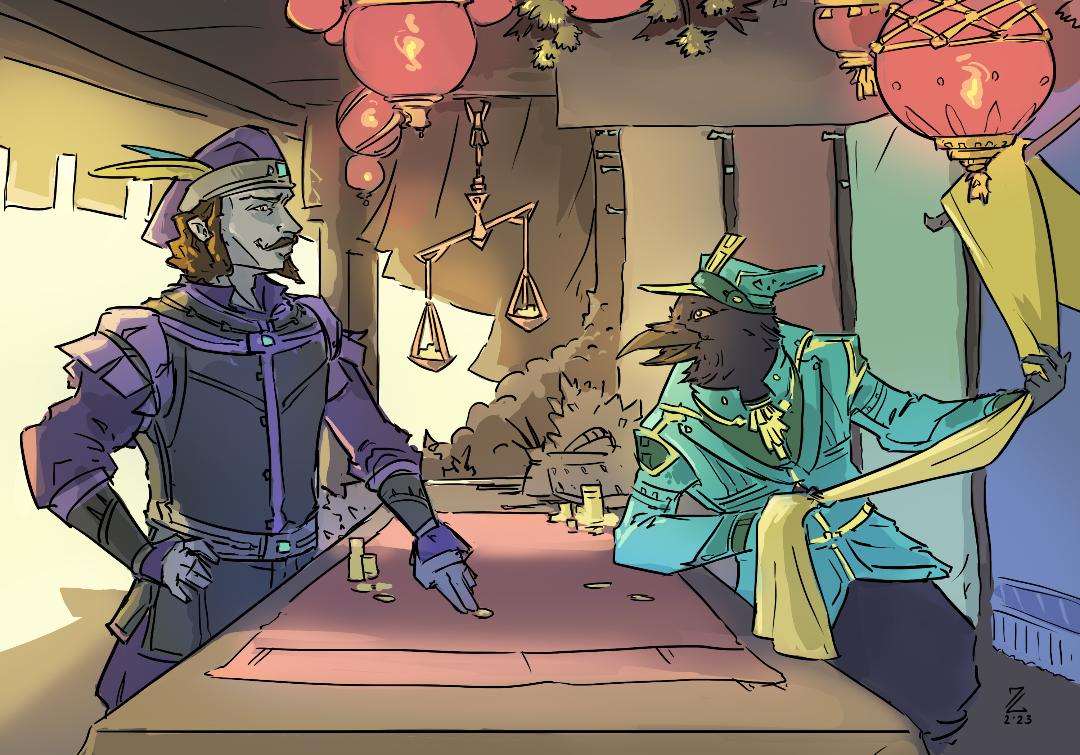
Scarterran haggling scene by Zeta Gardner
Partially due to their relatively short life spans, tengku are driven to make take risks to make their mark and seize their fortunes as quickly as they can.
There are noble birds among them, but tengku’s reputation for double-dealing, greed, and thievery is largely deserved. Many Tengku are mercenary minded adventurers seeking treasure and relics. More than a few are pickpockets and swindlers, and a few even worse sorts.
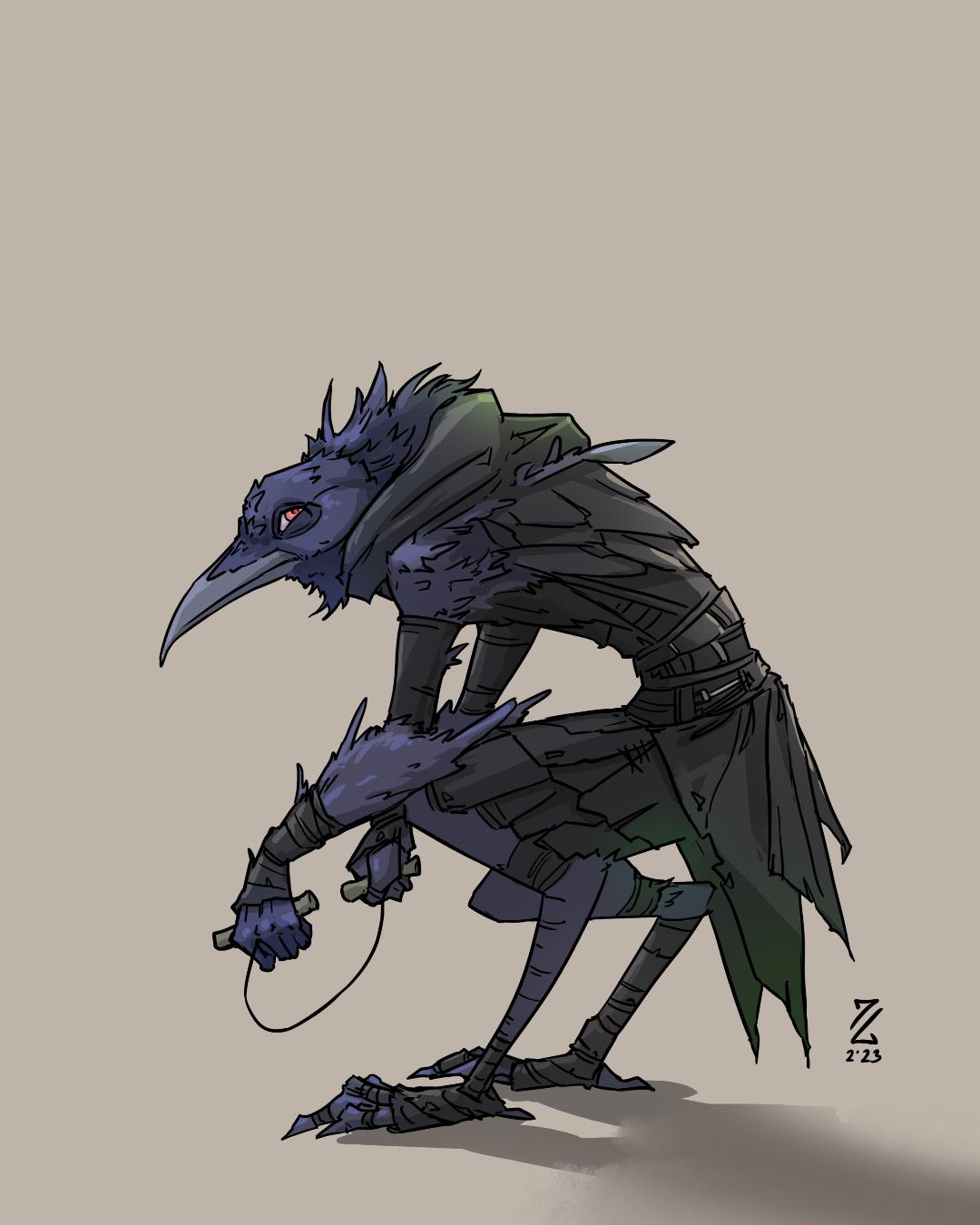
tengku #8 by Zeta Gardner
Tengku Character Creation
Graceful: -1 difficulty all non-magical rolls involving Dexterity
Keen Eyesight: -1 difficulty Alertness rolls
Mimicry: Tengku can mimic any voice or accent they hear. They cannot use their mimicry to speak a language they do not know. If they are trying to impersonate someone a listener knows very well, an opposed roll is necessary pitting the Tengku’s Manipulation + Subterfuge against the listener’s Perception + Empathy.
Profit Driven: Tengku treat Commerce as a simple skill and they receive a bonus die on all rolls involving Commerce.
Cooperative: Tengku gain a bonus die on rolls when making a cooperative roll. This means either directly pooling successes with another character, making a flank attack or running a multi-person social scheme (such as good cop, bad cop)
Hollow Bones: Tengku have hollow bones which enables their their excellent Dexterity but it comes with the drawback of greater vulnerability. When hit by blunt trauma or bludgeoning weapons, Tengku receive a +1 penalty on their soak roll, even if using armor or magic to soak it. Tengku also have one fewer bruise level than humans.
Tengku player characters have four fewer freebie points than humans
For guidelines and suggestions on making tengku characters, check out So you want to play a tengku?
Lifespan
52 years
Average Height
4'2" with a standard deviation of 3 inches.
Average Weight
75 to 85 pounds.
Body Tint, Colouring and Marking
Tengku feathers are often all black, though a few have white highlights, especially those of Fiery ethnicity. Feathers tend to lighten with age during a tengku's twilight years, eventually turning grey.
Geographic Distribution
Related Myths


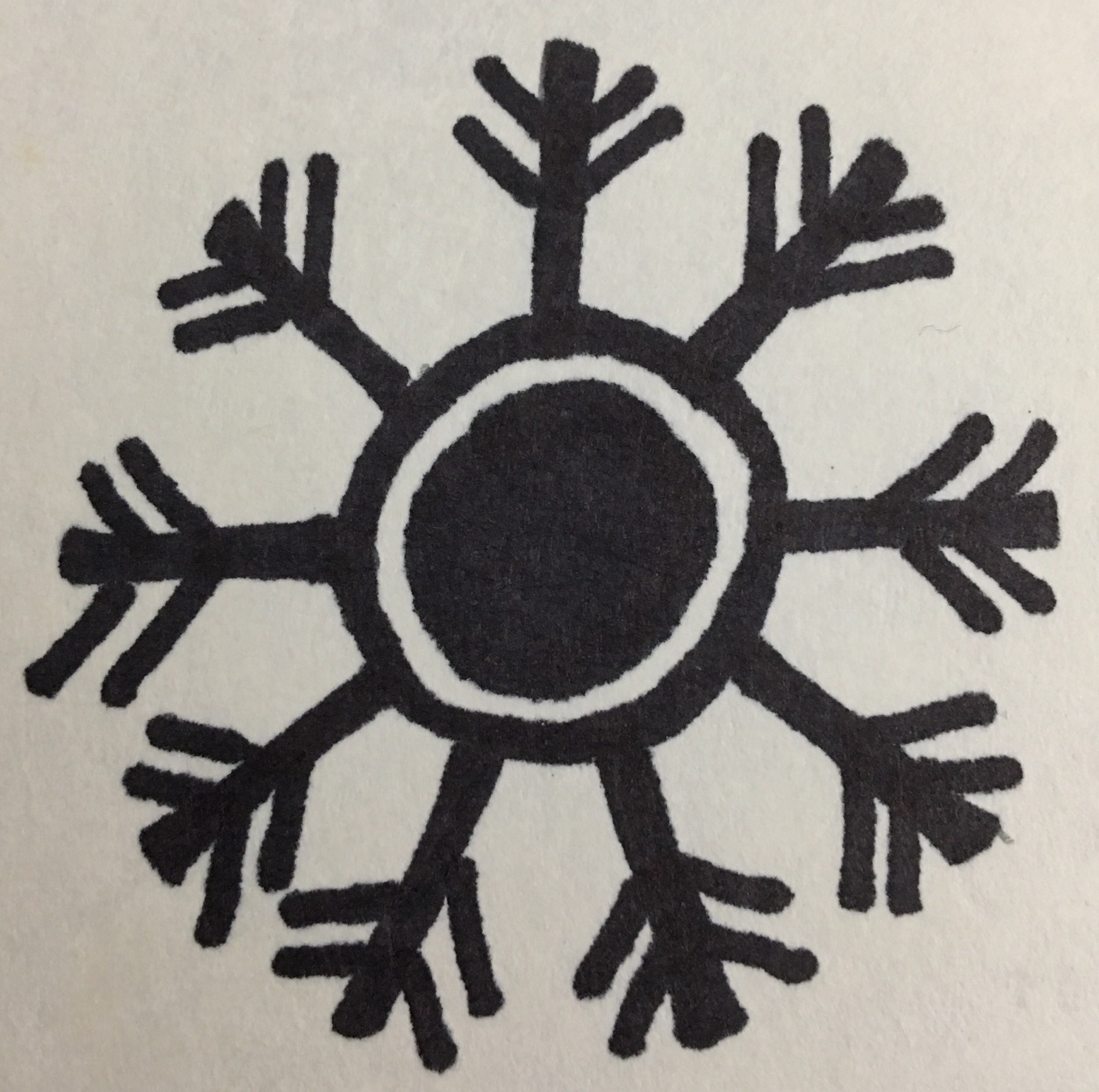
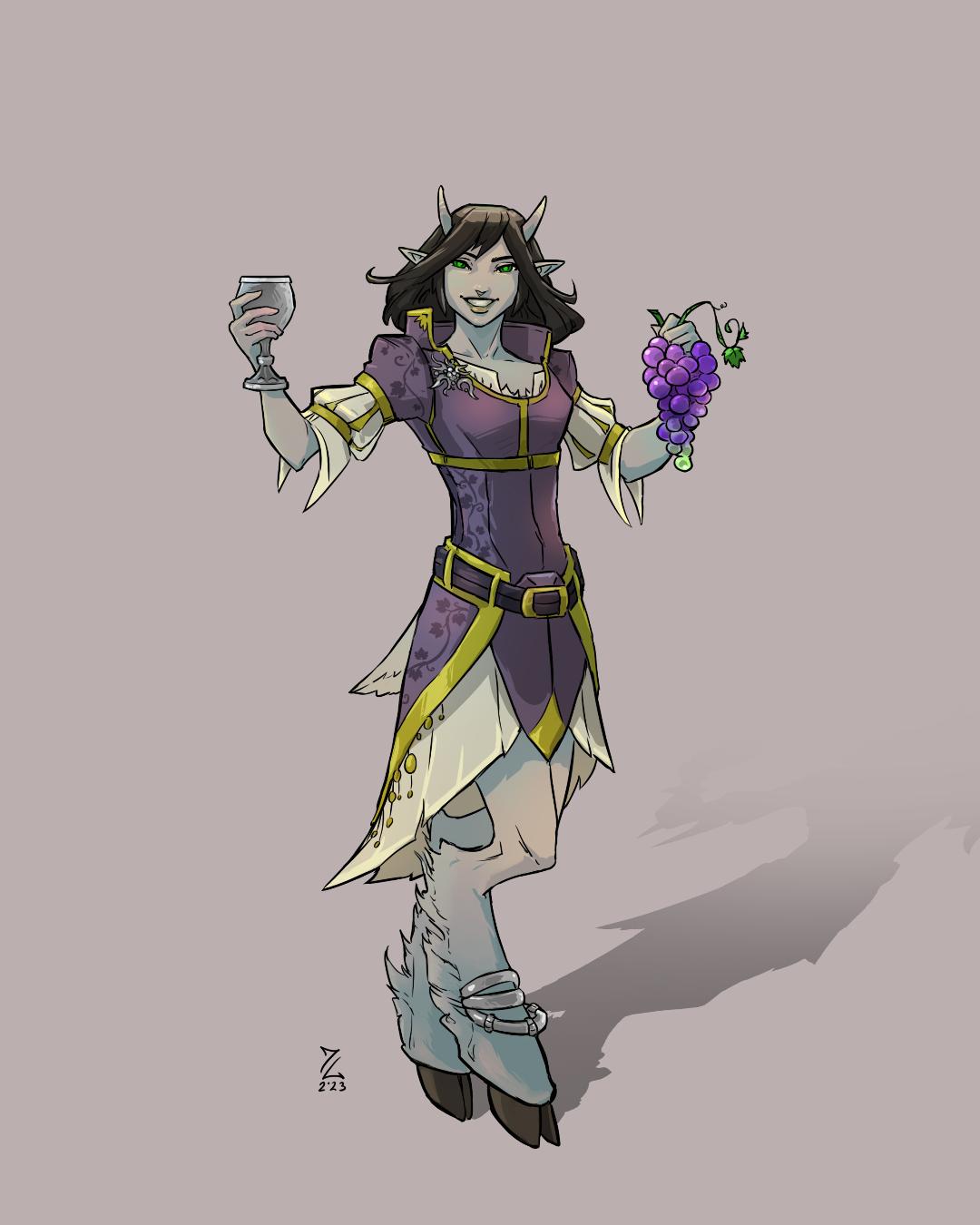
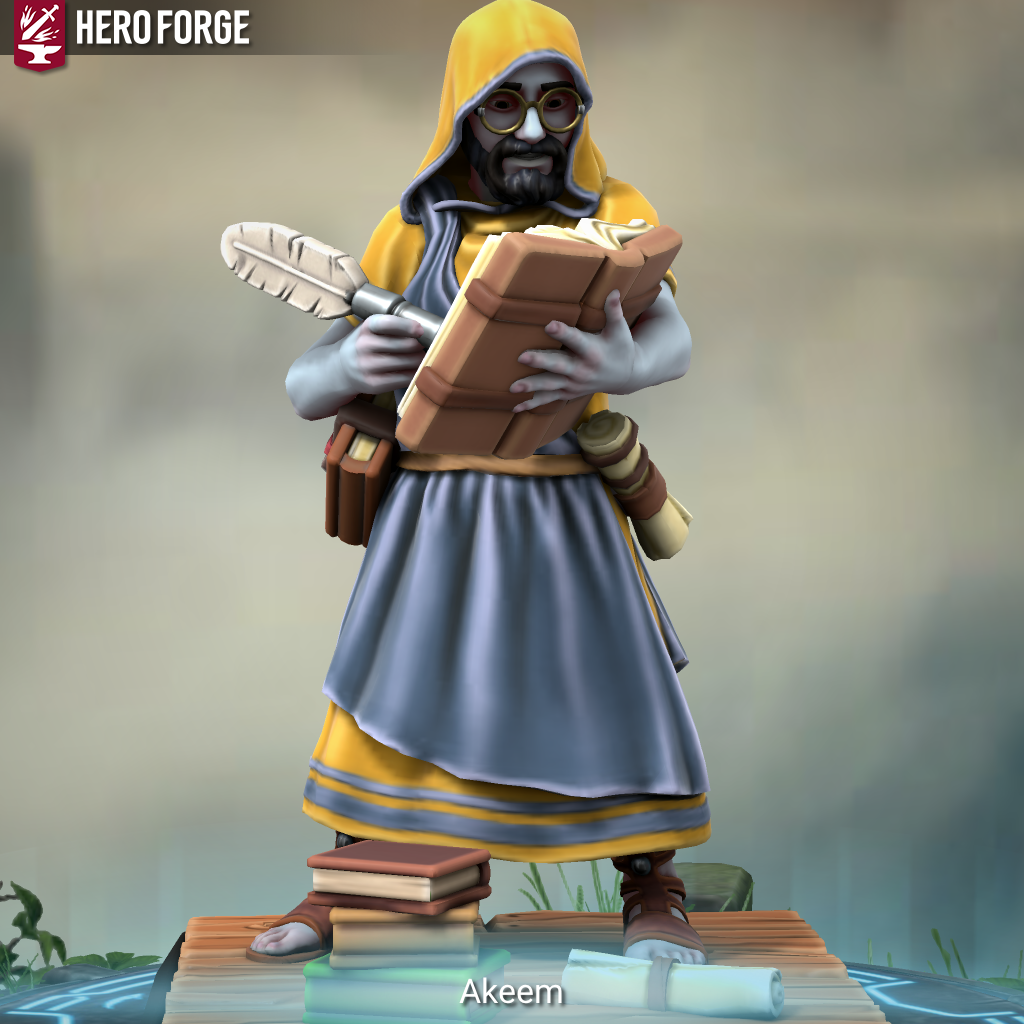
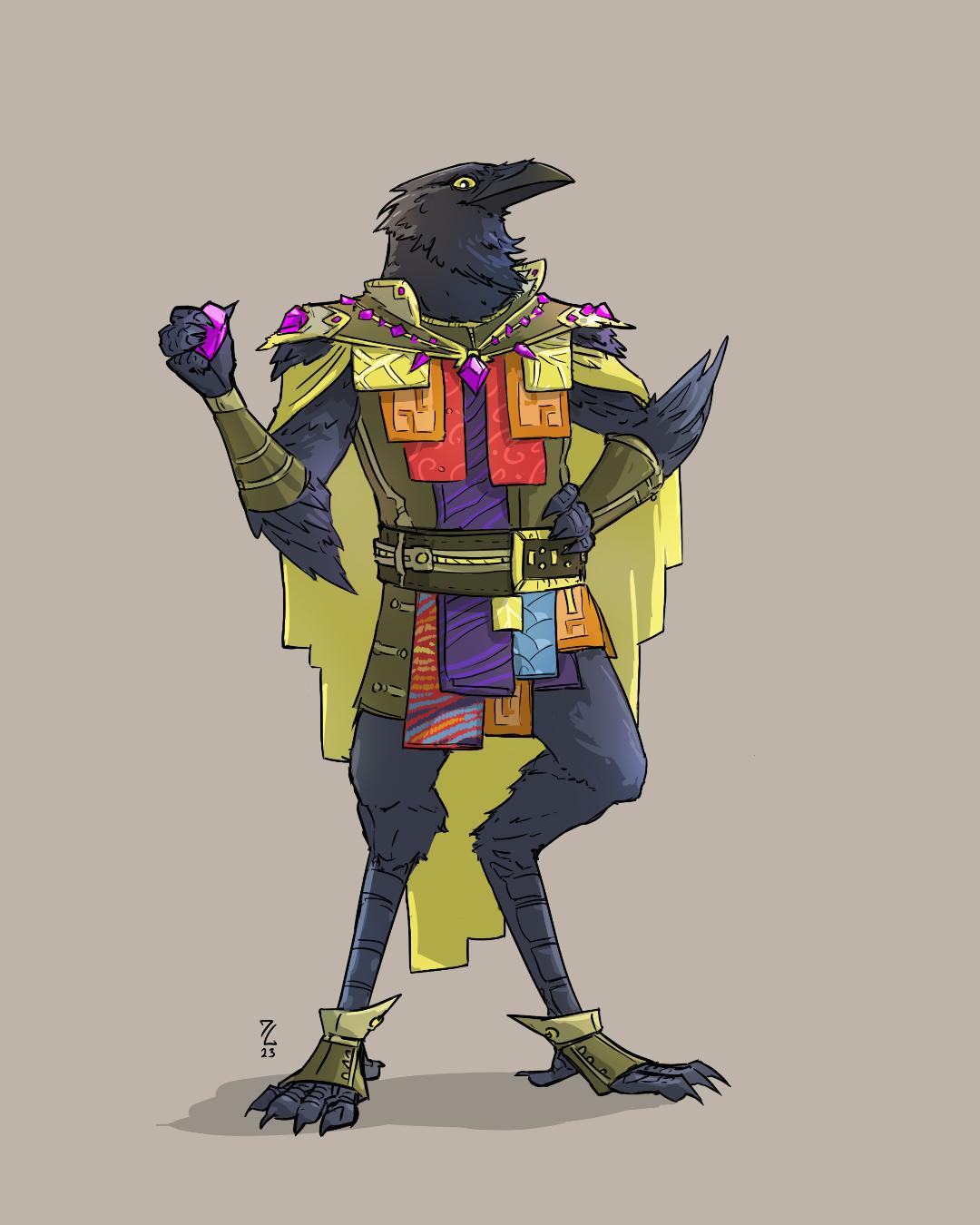
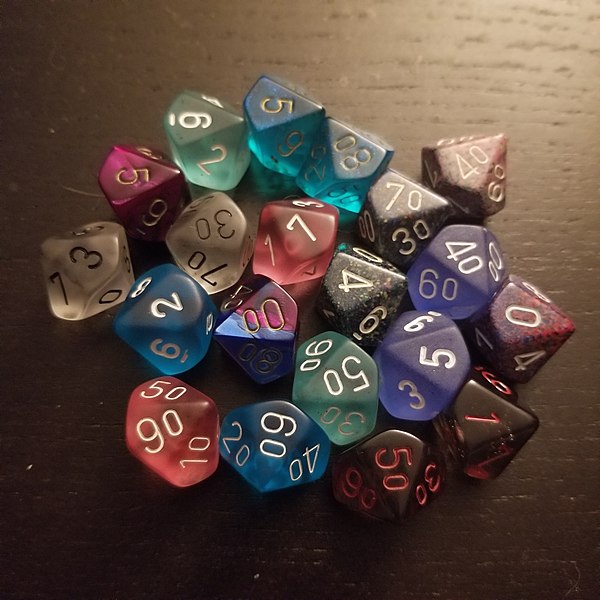
Comments